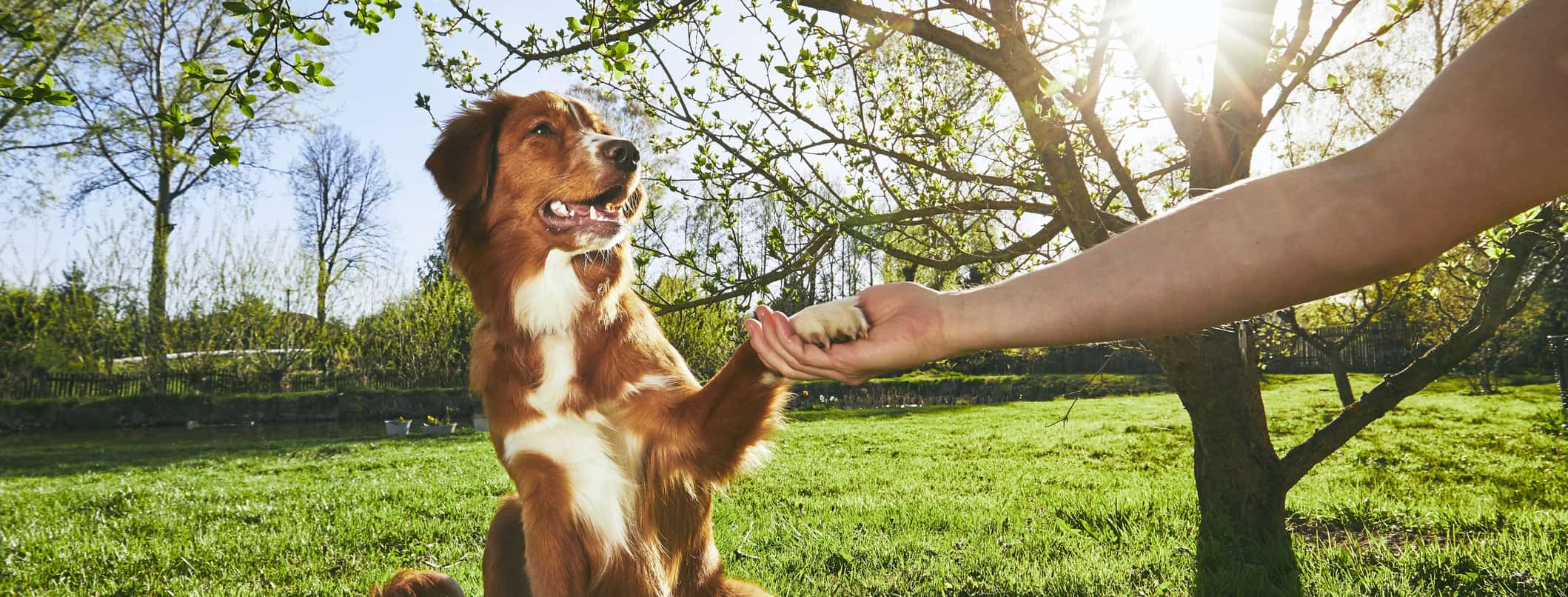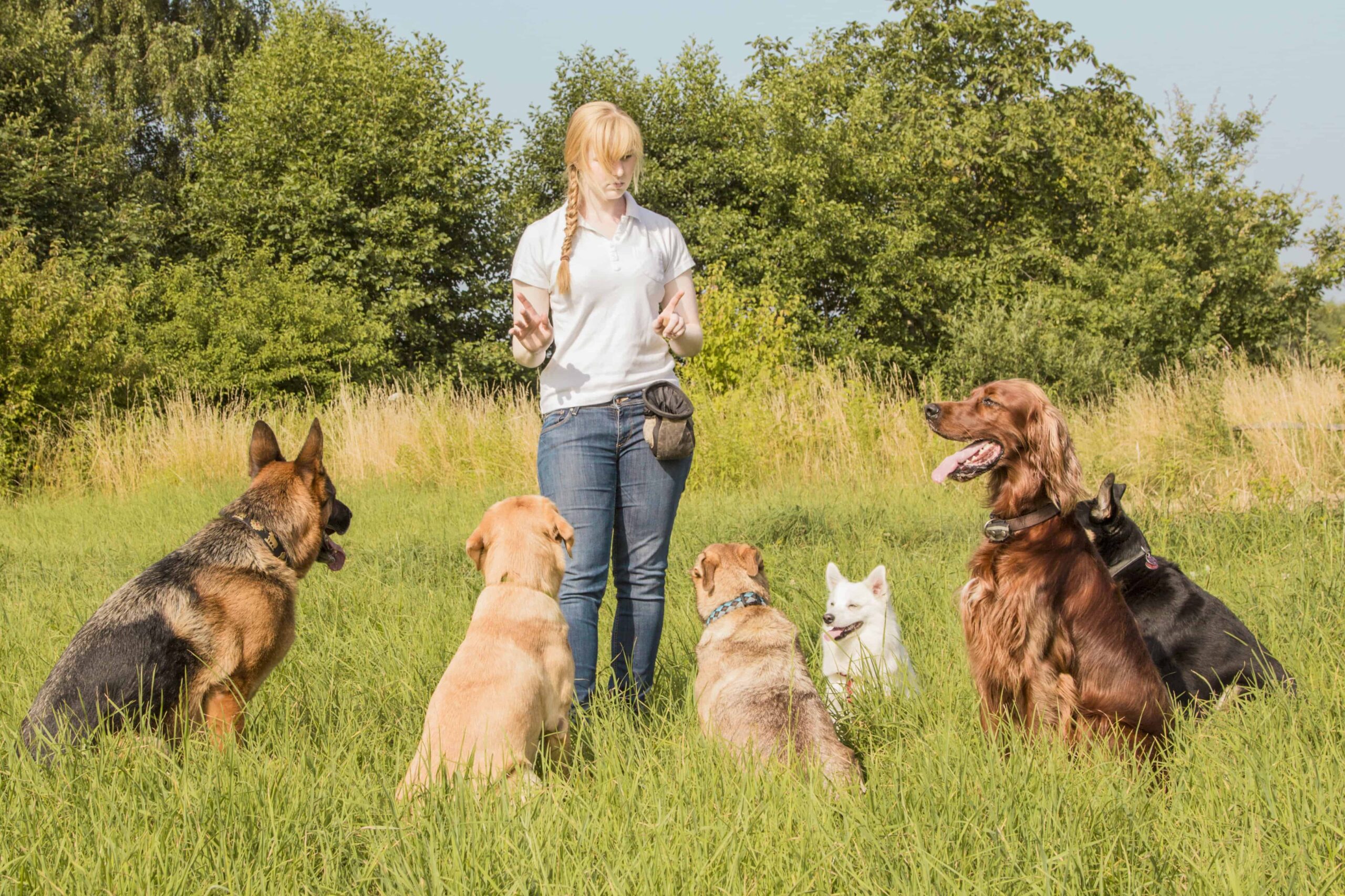Recognizing Canine Body Movement During Dog Training
Recognizing Canine Body Movement During Dog Training
Blog Article
Essential Tips for Effective Dog Training: An Overview for Pet Owners
Reliable pet training is a diverse process that requires a calculated method tailored to both the animal's personality and the owner's goals. Comprehending how to browse these challenges can substantially improve the training experience, inevitably transforming the partnership in between owner and pet.
Comprehending Canine Habits
Comprehending canine actions is necessary for reliable training and fostering a harmonious connection in between dogs and their owners. dog training. Dogs communicate largely with body language, articulations, and activities, making it crucial for owners to interpret these signals accurately.

Socializing plays a significant role in pet actions; direct exposure to different atmospheres, people, and various other pets can dramatically influence a pet dog's character. Additionally, elements such as breed characteristics and specific character ought to guide training approaches, as some types may have details behavior characteristics that necessitate customized techniques. By recognizing these aspects, owners can create a supportive atmosphere that urges positive behavior, resulting in effective training results and a much deeper bond with their animals.
Developing Constant Commands
Reliable communication with your pet begins with developing consistent commands. This fundamental aspect of training is important for cultivating understanding between you and your pet dog. Consistency in the commands you utilize ensures that your pet dog can reliably connect details words or phrases with the wanted behaviors.
When choosing commands, pick clear, distinct words that are simple to claim and distinguish from each other. Prevent making use of similar-sounding commands that may puzzle your pet. Making use of "sit" and "stay" is proper, yet "sit" and "struck" might lead to misunderstandings.
Furthermore, keep the very same tone and volume for every command. Pets are sensitive to vocal signs, so varying your tone can develop confusion.
It is equally essential to make certain that all household participants are on the same web page relating to the commands utilized. A united front in command use will certainly avoid mixed signals and enhance the discovering procedure.
Positive Support Strategies
The power of favorable reinforcement in dog training exists in its capability to encourage wanted habits through benefits and praise. This strategy is grounded in the concept that habits followed by desirable results are most likely to be repeated. By incorporating favorable reinforcement into your training regimen, you can effectively form your canine's actions in a constructive fashion.
To execute favorable reinforcement, it's essential to identify what encourages your dog, whether it be deals with, playthings, or verbal appreciation. When your canine executes a preferred activity, such as remaining on command, quickly reward them with a reward or love. This association between the command and the favorable outcome enhances their understanding.
It's critical to timing the rewards properly; delivering the reinforcement within secs of the desired behavior assists your dog make the connection (dog training). Furthermore, consistency is crucial-- ensure that all member of the family use the exact same commands and reward systems to avoid complication

Gradually, you can lower the frequency of deals with as your canine discovers the behavior, transitioning to praise or intermittent benefits. This approach not just promotes a solid bond between you and your pet dog yet likewise promotes a favorable understanding atmosphere, making educating a delightful experience for both.
Socialization and Interaction
Constantly exposing your canine to a range of settings, individuals, and various other pets is crucial for their social advancement. Socialization ought to begin early, ideally throughout the critical home window of 3 to 14 weeks, when puppies are most responsive to new experiences. Nonetheless, older pet dogs can additionally profit from continuous socialization efforts.
Present your canine to different setups, such as parks, pet-friendly shops, and urban locations. This direct exposure aids them adjust to numerous stimuli, decreasing stress and anxiety and concern feedbacks. Motivate positive interactions with other pet dogs and individuals, ensuring that these encounters are controlled and risk-free to cultivate confidence.
Utilize organized playdates with courteous pet dogs, as this can boost your dog's social abilities and show them proper habits. Obedience classes and training sessions also supply outstanding opportunities for socializing, allowing your pet dog to connect with others in a supervised setting.
Display your dog's body movement during communications, as this learn this here now will assist you determine their comfort level. Progressively raise exposure to even more challenging circumstances while making certain that each experience declares. A well-socialized pet is most likely to show balanced behavior, making them a pleasure to have in any setting.
Resolving Usual Training Difficulties
Every pet owner will run into training difficulties at some time, no matter their pet's age or socializing level. Identifying common concerns such as stubbornness, distractions, and fearfulness can help in establishing reliable methods for enhancement.

Interruptions throughout training sessions can derail emphasis. To battle this, start training in a silent setting with minimal stimulations. Slowly introduce diversions as the pet comes to be extra proficient in commands. Short, frequent training sessions are also effective in keeping focus.
Fearfulness can hinder a pet dog's understanding process. Gradual desensitization to the source of concern, coupled with favorable support, can aid reduce anxiousness. Perseverance is important; never compel a pet dog into a scenario that triggers distress, as this may aggravate the problem.
Ultimately, understanding and resolving these typical sites challenges with an organized approach will certainly promote a more effective training experience, strengthening the bond in between canine and owner while advertising efficient knowing.
Final Thought
In summary, effective dog training counts on a detailed understanding of canine behavior, the facility of regular commands, and the application of positive support techniques. Socializing plays a vital role in establishing well-adjusted pets, while attending to common training difficulties requires persistence and adaptability. By carrying out these essential methods, pet proprietors can cultivate a strong bond with their canines and advertise desirable actions, ultimately resulting in an unified relationship in between humans and their canine buddies.
Recognizing dog habits is important for reliable training get more and cultivating an unified partnership in between canines and their owners.Socialization plays a considerable duty in pet behavior; exposure to different atmospheres, individuals, and various other pets can considerably affect a pet dog's temperament.The power of positive reinforcement in pet training lies in its capability to encourage wanted behaviors via rewards and praise. By integrating favorable support right into your training regimen, you can successfully form your dog's behavior in a constructive manner.
In summary, successful dog training relies on a comprehensive understanding of canine behavior, the establishment of regular commands, and the application of favorable support methods.
Report this page